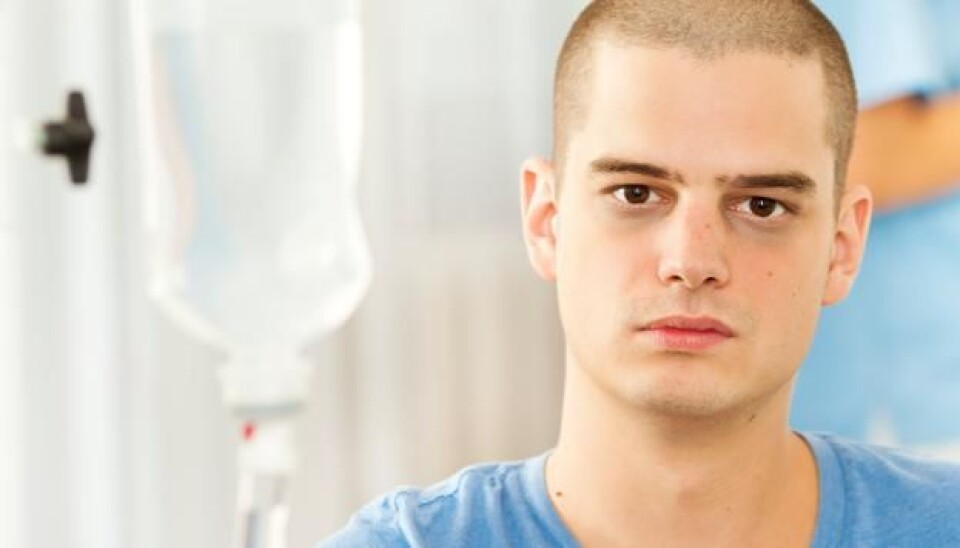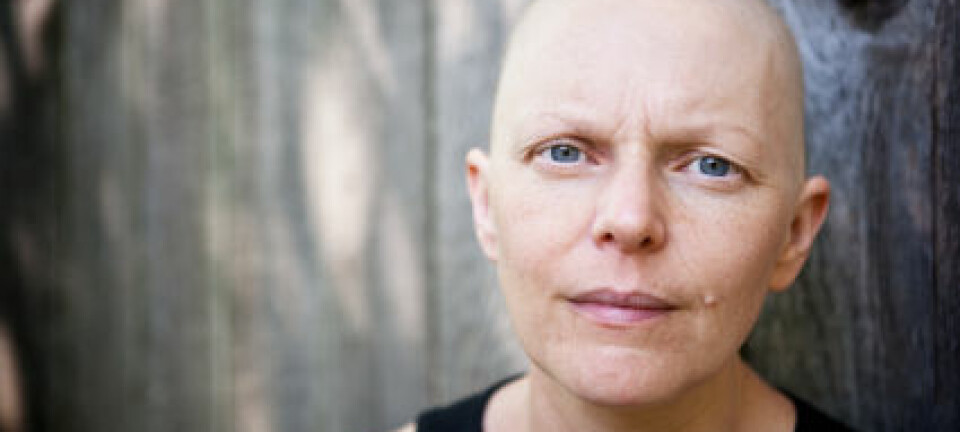
Cancer researchers strive to predict chemotherapy resistance
A main obstacle to a cancer cure is chemoresistance. A new test is developed to identify resistant patients before treatment starts.
Denne artikkelen er over ti år gammel og kan inneholde utdatert informasjon.
Cancer is one of the most pernicious diseases in the developed world. For instance one out of four Norwegians die of cancer.
Researchers Per Eystein Lønning and Stian Knappskog are making headway in revealing the mechanisms behind resistance to chemotherapy.
Their first hurdle is to find ways of ascertaining which type of chemotherapy drug, if any, will work on a patient prior to starting treatment.
This will be tested by means of a simple tissue sample from a tumour.

It will be significant for the daily well-being and survivability of many cancer patients when the leap from the laboratory to clinical use is made.
“Patients whose cancer has spread to other organs are especially in need of chemotherapy treatment. We’re investigating what it is that causes resistance among various categories of patients,” says Knappskog.
Lønning and Knappskog are both connected with the Mohn Cancer Research Laboratory at Haukeland University Hospital in Bergen.
Works a while, then cancer returns
Lønning stresses that it’s not just a matter of identifying patients whose cancers are resistant to chemo drugs and the mechanisms at work.
What comes next is the crux – finding weapons against cancer cells’ resistance to chemotherapy medications. The object is to eliminate this resistance.
Big variations are found between types of cancer.
“For instance with breast cancer we find that chemotherapy administered right after the operation reduces the number of deaths by about 35 percent. In other words, chemo drugs heal over a third of all who are treated,” says Lønning.
When chemotherapy is given to patients whose cancer has spread to other organs – metastasised – the researchers see that many respond for a while but the disease almost invariably returns.
“This tells us the mechanisms of resistance are found in some, but not all the tumour cells,” asserts Lønning.
Further researcher efforts
The two Norwegian researchers are optimistic.
“We’re heading for great leaps with the help of new technology. We can come up with a test enabling us to determine which patients are resistant,” says Lønning.
The acclaimed professor of oncology has spent no less than 30 years of his research career trying to solve the chemoresistance problem.
“We’ve made progress but what’s crucial now is to mount stronger, targeted research efforts, involving lots of high-quality studies,” says Lønning.
Will pinpoint the cause
Research on the resistance problem is complicated but the professor thinks the results from later years show it’s no longer a question of whether the causes of chemoresistance will be found, but when they will be found.
“The day we can avoid giving a certain type of chemotherapy which proves to be ineffectual after months of treatment we can save a lot of valuable time,” continues Lønning.
“We will also avoid a number of unnecessary side-effects, as chemotherapy is tough on the body,” he adds.
Hunting for genetic gene mutations
Knappskog and Lønning are searching for inherited mutations, the mistakes in the codes of normal cells as well as mutations that are specific for cancerous tumours.
“We are starting to understand more about which mechanisms yield resistance. We and others have identified some of the genetic changes which make tumours resistant to chemotherapy.”
“We’ve seen that a lot of genes are involved, at least 20, and that chain reactions within them are important,” says Knappskog, who has researched resistance for the last ten years.
Not the entire picture
Despite a better understanding, medical science has yet to trace the entire picture of the mechanisms behind chemoresistance.
“We hope to get a much better picture of the problems by analysing tests from patients who have participated in clinical studies for many years,” say the researchers.
They are looking into ways genes are organised in the cells and how they interact in chain reactions.
“Any given gene in a chain can knock out the entire chain and then we have resistance. Breakage in the DNA is made with normal kinds of chemotherapy, which trigger a signal system resulting in the cells killing themselves or dying off.”
“A number of genes are involved in this signal system and they affect each other in a chain reaction. The chemo drug doesn’t work if you have defects in one or more of the genes in this reaction,” says Knappskog.
When the power is out
Lønning and Knappskog have shown that resistance to chemo treatment doesn’t occur because of the same exact genetic error factors in all patients, but rather in errors in different factors that work together.
This can be illustrated with what happens when there’s a power failure.
“If we’re working on a PC and the screen connection is broken, the picture disappears. The same occurs if the power cable to the machine is cut, if the fuse box to the house blows, power lines are cut or if there’s a power outage to an entire community,” explains Lønning.
In power grids there are often several parallel cables, so others can take over. It looks as if chemoresistance occurs when several gene pathways in the cancer cell are destroyed.
“We think that cells have several overlapping signal pathways. We want to identify more of these routes where there can also be breaks. The most resistant cancer cells have breaks in numerous signal pathways. We don’t know them all but we are starting to chart a good map of most of them,” says Stian Knappskog.
Disparate treatment traditions
Knappskog explains why there has been insufficient international research on chemoresistance.
“One of the reasons is that many patients are given a coctail of medicines, making it hard to link resistance to any single type of treatment.”
“In Norway we have periodically practiced giving one type of treatment at a time, enabling us to use biobanks to clearly tie genetic discoveries to specific treatment regimens,” explains Knappskog.
Translated by: Glenn Ostling

































